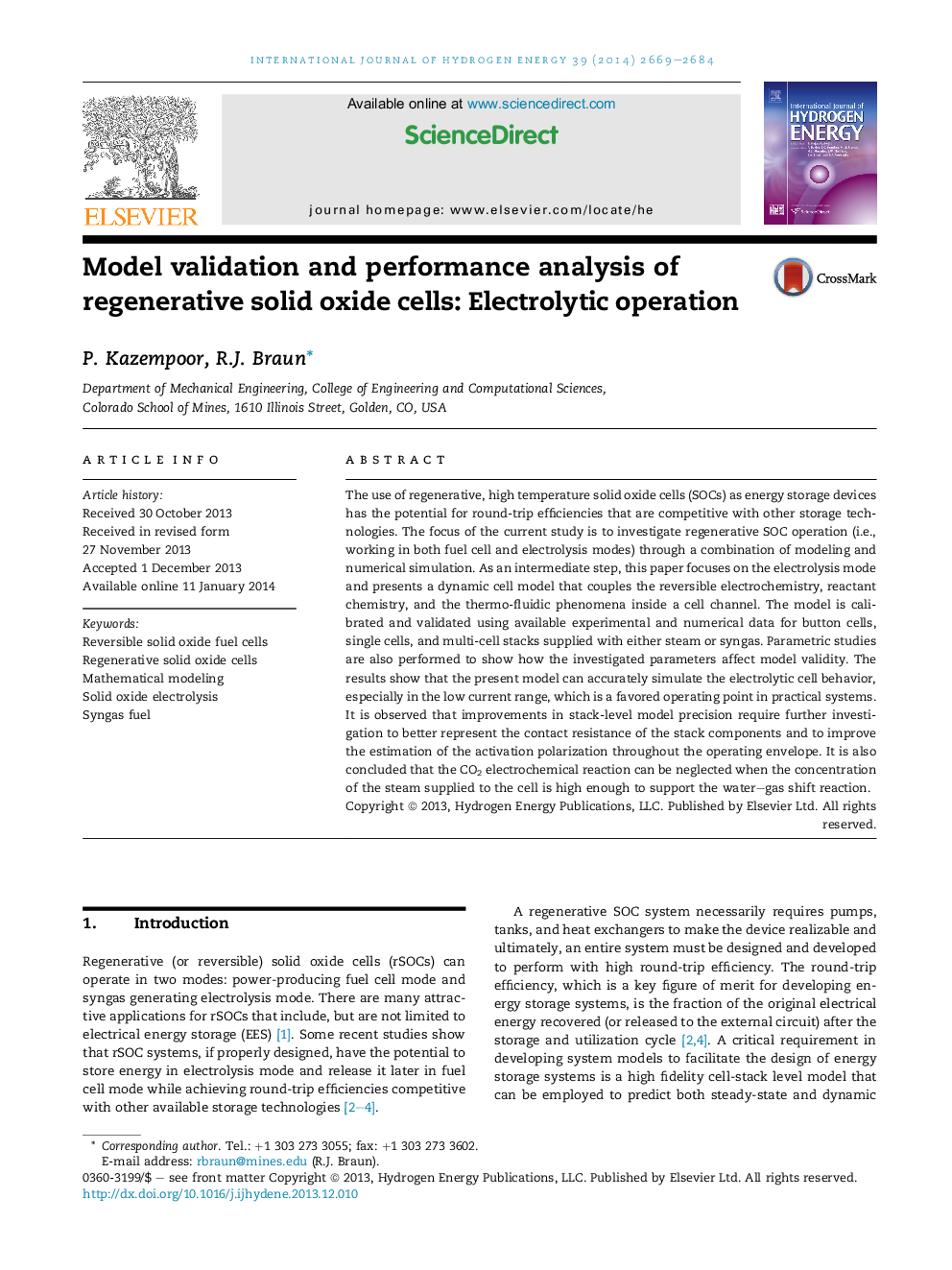| Article ID | Journal | Published Year | Pages | File Type |
|---|---|---|---|---|
| 7720428 | International Journal of Hydrogen Energy | 2014 | 16 Pages |
Abstract
The use of regenerative, high temperature solid oxide cells (SOCs) as energy storage devices has the potential for round-trip efficiencies that are competitive with other storage technologies. The focus of the current study is to investigate regenerative SOC operation (i.e., working in both fuel cell and electrolysis modes) through a combination of modeling and numerical simulation. As an intermediate step, this paper focuses on the electrolysis mode and presents a dynamic cell model that couples the reversible electrochemistry, reactant chemistry, and the thermo-fluidic phenomena inside a cell channel. The model is calibrated and validated using available experimental and numerical data for button cells, single cells, and multi-cell stacks supplied with either steam or syngas. Parametric studies are also performed to show how the investigated parameters affect model validity. The results show that the present model can accurately simulate the electrolytic cell behavior, especially in the low current range, which is a favored operating point in practical systems. It is observed that improvements in stack-level model precision require further investigation to better represent the contact resistance of the stack components and to improve the estimation of the activation polarization throughout the operating envelope. It is also concluded that the CO2 electrochemical reaction can be neglected when the concentration of the steam supplied to the cell is high enough to support the water-gas shift reaction.
Related Topics
Physical Sciences and Engineering
Chemistry
Electrochemistry
Authors
P. Kazempoor, R.J. Braun,
